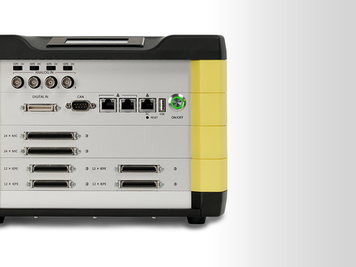Application Area
Acoustic analysis of large objects in free field during operation.
Measurement Object
Stripping shovel of a coal strip mining.
Measurement Set-up
In order to cover the whole strip mining excavator during the first measurement, the Acoustic Camera was set up at 150 m distance from the noise source. To get a close up of the derrick jib, a second measurement was carried out where the Acoustic Camera was set up at 100 m distance of it.
For a detailed analysis of the upper-side of the jib, a third measurement was done at the bank. The entire measurement session and the main analysis were performed within 3 hours directly on the strip mine.
A high-capacity, portable battery was used as power supply offering a continuous operation of more than 4 hours.
All data was treated with an A–weighting filter in order to minimize the background noise created by wind and other machines nearby the strip mine.







